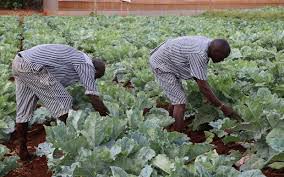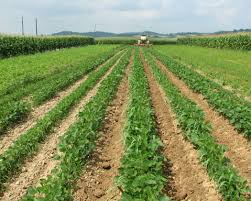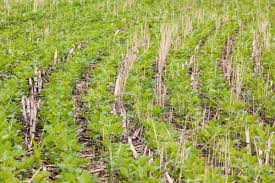Sustainable continuous cropping systems in farming represent an innovative approach to agriculture that seeks to maintain soil health, maximize crop yields, and minimize environmental impact. This method involves planting crops in the same field year after year without the long fallow periods typical in traditional crop rotation systems.
By adopting continuous cropping, farmers can enhance soil structure and fertility through consistent organic matter addition, primarily from crop residues. This practice helps to improve the overall health of the soil ecosystem, fostering a diverse community of microorganisms that play a crucial role in nutrient cycling and soil fertility.
One of the core principles of sustainable continuous cropping systems is the focus on biodiversity. By selecting a variety of crops that complement each other, farmers can reduce the risk of pest infestations and diseases, which often thrive in monoculture systems.
Additionally, crop diversity can enhance resilience to climate variability, allowing farms to adapt more effectively to changing weather patterns. Implementing diverse cropping systems can lead to improved yields and reduced reliance on chemical inputs, which aligns with sustainable agriculture goals.
Another significant advantage of sustainable continuous cropping is its potential for enhancing water retention and reducing soil erosion. With healthy, well-structured soils, farmers can retain more moisture, which is particularly beneficial during periods of drought.
Continuous cropping systems also contribute to minimizing runoff, thereby improving water quality in surrounding ecosystems. By maintaining soil cover year-round, these systems help protect the soil surface from erosion caused by wind and water, preserving the land’s productivity for future generations.
Incorporating sustainable practices such as cover cropping, reduced tillage, and organic amendments further enhances the benefits of continuous cropping. Cover crops, for example, can be grown during off-seasons, adding organic matter, improving soil structure, and preventing erosion.
Reduced tillage practices minimize soil disturbance, promoting healthier soil structure and reducing the carbon footprint associated with farming operations. Organic amendments, like compost or green manure, can replenish essential nutrients, improving overall soil fertility without the negative effects of synthetic fertilizers.
Despite the numerous benefits, transitioning to sustainable continuous cropping systems can present challenges for farmers. Initial investment costs for new equipment or seeds, along with the need for knowledge and training, can be barriers to adoption. Additionally, farmers may face resistance to change from established practices that have been followed for generations.
However, education and support from agricultural extension services and research institutions can play a critical role in overcoming these challenges, providing farmers with the tools and knowledge necessary to implement sustainable practices effectively.
Sustainable continuous cropping systems offer a promising pathway toward more resilient and environmentally friendly farming practices. By focusing on soil health, biodiversity, and water conservation, these systems can help ensure food security while protecting natural resources.
As the global population continues to grow and the effects of climate change intensify, adopting sustainable agricultural practices will be crucial in meeting future food demands. By prioritizing sustainability in farming, we can create a more resilient agricultural system that benefits farmers, consumers, and the environment alike.
Benefits of Sustainable Continuous Cropping Systems

1. Improved Soil Health: Sustainable continuous cropping systems promote soil structure and fertility through organic matter retention, enhancing nutrient availability and microbial activity.
2. Increased Crop Yields: By maintaining consistent planting, farmers can achieve higher overall yields, as crops benefit from optimized growth conditions without the disruption caused by fallow periods.
3. Enhanced Resource Efficiency: These systems maximize the use of available resources such as water, nutrients, and sunlight, leading to more efficient production per unit area.
4. Reduced Erosion Risks: Continuous cropping can help protect the soil from erosion by maintaining ground cover and stabilizing soil structure, reducing loss of topsoil.
5. Economic Stability: Farmers benefit from steady income streams by continuously producing crops, which can improve financial resilience against market fluctuations.
6. Pest and Weed Management: Sustainable practices can reduce reliance on chemical inputs, as the diversity of plants may disrupt pest cycles and improve biological control options.
7. Carbon Sequestration: Continuous cropping systems can contribute to carbon sequestration in soils, helping mitigate climate change by storing carbon rather than releasing it into the atmosphere.
Key Principles of Continuous Cropping
1. Crop Diversity: Incorporating various crops within the same area helps break pest and disease cycles, improve soil health, and increase resilience against environmental stressors.
2. Soil Management Practices: Emphasizing practices such as cover cropping, mulching, and reduced tillage can enhance soil structure, moisture retention, and nutrient availability.
3. Integrated Pest Management (IPM): Using a combination of biological, cultural, and mechanical control strategies helps manage pests sustainably while minimizing chemical use.
4. Nutrient Management: Regular soil testing and tailored nutrient applications ensure that crops receive the necessary nutrients for optimal growth without leading to nutrient depletion.
5. Monitoring and Adaptation: Continuous monitoring of crop performance, soil health, and pest populations allows for timely adjustments to management practices to maintain system sustainability.
Read Also: 18 Medicinal Health Benefits Of Hydnocarpus wightianus (Chaulmoogra)
Crop Rotation Strategies for Sustainability

1. Diversified Crop Rotation: Implementing a diverse rotation that includes legumes, cereals, and cover crops can enhance soil fertility, reduce pest pressures, and improve overall farm resilience.
2. Sequential Cropping: Following one crop with another that complements its nutrient requirements or pest dynamics (e.g., planting a legume after a cereal) helps optimize resource use and improve soil health.
3. Multi-Year Rotations: Planning crop rotations over multiple years allows for long-term improvements in soil structure, fertility, and pest management, fostering sustainable practices that benefit subsequent crops.
4. Integrating Cover Crops: Incorporating cover crops into the rotation cycle can enhance soil health, improve moisture retention, and suppress weeds, contributing to the sustainability of the cropping system.
5. Specific Crop Sequences: Utilizing specific sequences based on local conditions (e.g., following a deep-rooted crop with shallow-rooted crops) can maximize resource use efficiency and reduce competition for nutrients and water.
Soil Health Management in Continuous Cropping
1. Soil Testing and Monitoring: Regular soil testing helps determine nutrient levels, pH, and organic matter content, enabling informed decisions for amendments and management practices.
2. Organic Matter Addition: Incorporating organic matter, such as compost or cover crops, enhances soil structure, moisture retention, and microbial activity, contributing to overall soil health.
3. Reduced Tillage: Minimizing soil disturbance through reduced tillage practices helps preserve soil structure, reduces erosion, and maintains the habitat for beneficial organisms.
4. Cover Cropping: Planting cover crops during fallow periods protects soil from erosion, improves organic matter, and enhances nutrient cycling, benefiting subsequent crops.
5. Crop Rotation: Integrating different crops in the continuous cropping system promotes biodiversity, enhances soil fertility, and disrupts pest and disease cycles, contributing to better soil health.
Pest and Disease Management Techniques
1. Integrated Pest Management (IPM): Combining biological, cultural, and chemical controls to manage pests sustainably, reducing reliance on chemical pesticides and enhancing natural predator populations.
2. Crop Diversity: Planting a variety of crops can confuse pests, reduce their populations, and lower disease incidence by disrupting their life cycles.
3. Resistant Varieties: Selecting and planting pest and disease-resistant crop varieties can significantly reduce the impact of pests and diseases in continuous cropping systems.
4. Biological Control: Utilizing natural predators or parasitoids to manage pest populations can help reduce chemical usage and enhance ecological balance.
5. Monitoring and Scouting: Regularly inspecting crops for early signs of pests and diseases enables timely interventions, improving overall crop health and yield.
Water Conservation Practices in Continuous Cropping
1. Drip Irrigation: Implementing drip irrigation systems delivers water directly to plant roots, reducing water waste and improving efficiency in water use.
2. Rainwater Harvesting: Collecting and storing rainwater for irrigation helps conserve water resources and reduces dependency on groundwater.
3. Soil Mulching: Applying organic or inorganic mulches retains soil moisture, suppresses weed growth, and improves soil temperature regulation.
4. Cover Cropping for Moisture Retention: Planting cover crops during non-cropping seasons helps protect soil moisture, improve infiltration, and reduce evaporation.
5. No-Till Farming: Practicing no-till agriculture minimizes soil disturbance, enhances water infiltration, and promotes better moisture retention in the soil.
Read Also: How To Prevent Rats From Invading Your Poultry House
Nutrient Management for Continuous Cropping Systems

1. Balanced Fertilization: Conducting soil tests to determine nutrient deficiencies and applying fertilizers accordingly helps maintain optimal nutrient levels for crop growth.
2. Nutrient Cycling: Utilizing cover crops and crop residues to recycle nutrients within the system can reduce the need for synthetic fertilizers and enhance soil fertility.
3. Controlled-Release Fertilizers: Using slow-release or controlled-release fertilizers allows for more efficient nutrient uptake by crops, reducing nutrient loss through leaching.
4. Intercropping with Legumes: Incorporating legumes in continuous cropping systems enhances nitrogen fixation, improving soil fertility and reducing the need for nitrogen fertilizers.
5. Nutrient Timing: Applying fertilizers at critical growth stages of crops ensures that nutrients are available when plants need them most, maximizing efficiency and minimizing waste.
Economic Viability of Sustainable Continuous Cropping
1. Increased Yield Potential: Sustainable continuous cropping systems often lead to higher yields due to improved soil health, nutrient management, and reduced pest and disease pressures, enhancing overall profitability.
2. Reduced Input Costs: By utilizing practices such as crop rotation and cover cropping, farmers can decrease the need for chemical fertilizers and pesticides, leading to significant cost savings over time.
3. Diversification of Income: Continuous cropping systems allow for the cultivation of multiple crops throughout the year, providing farmers with various income streams and reducing financial risk.
4. Access to Premium Markets: Sustainable practices often appeal to consumers seeking organic or sustainably grown products, allowing farmers to tap into premium markets and achieve higher prices for their produce.
5. Long-term Soil Fertility: Investing in sustainable continuous cropping enhances soil fertility over time, leading to sustained productivity and reduced need for expensive soil amendments in the long run.
Case Studies of Successful Continuous Cropping
1. The Rodale Institute’s Organic Farming Systems Trials: Research conducted by the Rodale Institute demonstrated that organic continuous cropping systems, including cover cropping and crop rotation, led to higher yields and improved soil health compared to conventional practices.
2. Illinois Sustainable Agriculture Partnership: Farmers in Illinois who adopted continuous corn and soybean systems with reduced tillage and cover cropping reported improved soil moisture retention, increased yields, and reduced input costs, demonstrating economic benefits.
3. The Land Institute’s Kernza Perennial Grain Research: The Land Institute’s research on Kernza, a perennial grain, showed that continuous cropping with perennial species reduced soil erosion, enhanced biodiversity, and provided stable economic returns over annual cropping systems.
4. Integrated Crop-Livestock Systems in Brazil: Farmers in Brazil have successfully integrated livestock with continuous cropping systems, leading to improved nutrient cycling, reduced fertilizer costs, and increased profitability from both crop and animal production.
5. Agroforestry Systems in West Africa: Case studies from West Africa illustrate the economic benefits of integrating trees into continuous cropping systems, enhancing soil fertility, providing additional income from timber or fruits, and improving resilience to climate change.
Challenges in Implementing Continuous Cropping Systems
1. Soil Degradation Risks: Without proper management, continuous cropping can lead to soil degradation, nutrient depletion, and reduced soil health, necessitating careful planning and practices to mitigate these risks.
2. Pest and Disease Pressure: Continuous cropping may increase susceptibility to certain pests and diseases, requiring farmers to implement effective integrated pest management strategies to protect crops.
3. Market Access and Demand: Farmers may face challenges accessing markets that demand sustainable practices or may struggle to find buyers for diverse crops, impacting the economic viability of continuous cropping systems.
4. Initial Investment Costs: Transitioning to continuous cropping systems may require significant upfront investments in infrastructure, equipment, or education, posing a financial barrier for some farmers.
5. Knowledge and Expertise: Successful implementation of continuous cropping systems requires knowledge of agronomy, pest management, and soil health, which may necessitate training and support for farmers unfamiliar with these practices.
Do you have any questions, suggestions, or contributions? If so, please feel free to use the comment box below to share your thoughts. We also encourage you to kindly share this information with others who might benefit from it. Since we can’t reach everyone at once, we truly appreciate your help in spreading the word. Thank you so much for your support and for sharing!
Read Also: Sheep 101: Wool Production Complete Guide

